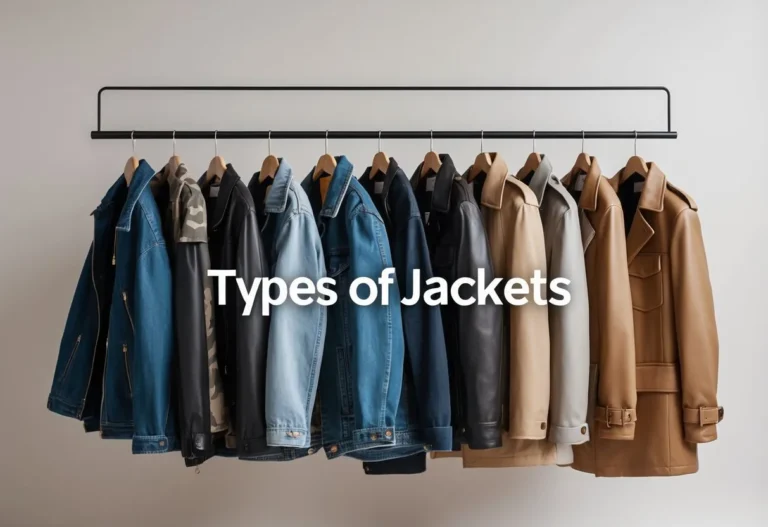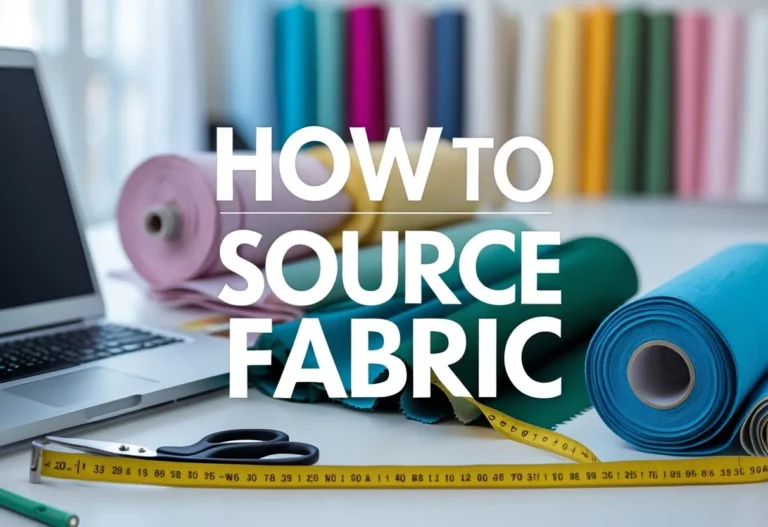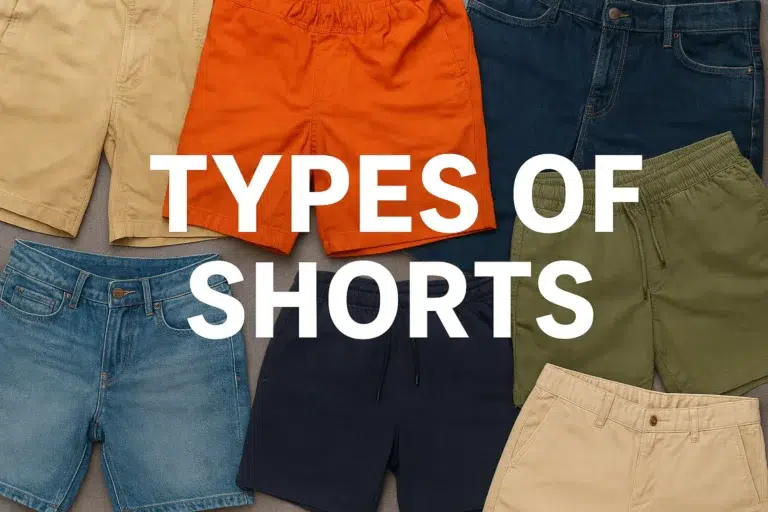10 Types of Sports Bras for Optimal Support and Comfort
Sports bras are an important part of athletic wear for many women. They provide support and comfort during various physical activities, helping to protect breast tissue and reduce discomfort.

Choosing the right type of sports bra depends on the activity, support needs, and personal comfort. Understanding the different kinds of sports bras can help individuals find the best fit for their workouts and body shape.
1) Compression Sports Bras

Compression sports bras work by pressing the breasts against the chest to reduce movement. They do not have separate cups but instead use a tight fit to hold everything in place.
These bras are usually wire-free and often have a pullover design. They are best suited for low to medium-impact activities like yoga, walking, and Pilates.
Compression bras work well for people with small to medium bust sizes. They provide support mainly through the snug fit rather than shaping the breasts.
Because they limit bounce by keeping the breasts flat against the body, compression bras help reduce discomfort during exercise. They are simple and usually lightweight.
Many compression sports bras are made with stretchy, breathable fabric to keep the wearer comfortable during workouts. They are a popular choice for low-impact sports or as a base layer under clothing.
2) Encapsulation Sports Bras

Encapsulation sports bras have separate cups for each breast. This design helps to support and shape the breasts individually. These bras look similar to regular bras but are made with materials that keep the breasts stable during movement.
They provide natural support without flattening the chest. This makes them comfortable for many types of activities, especially those with moderate to high impact. Women with larger busts often prefer encapsulation bras because they offer better hold and reduce bounce.
The cups in encapsulation bras can be molded or lined to add extra support and comfort. These bras usually have adjustable straps and bands to customize the fit. The focus is on preventing movement side to side and up and down while keeping a natural shape.
Encapsulation sports bras work well for activities like running, hiking, and tennis. They suit women who want to avoid the compression feel of other sports bras but still need firm support. Proper fit is important to get the full benefit from this type of bra.
3) Combination Sports Bras

Combination sports bras mix the features of compression and encapsulation bras. They provide both support by pressing the breasts against the chest and by holding each breast separately with distinct cups. This design helps reduce movement more effectively than either type alone.
These bras are often recommended for women with larger busts. They offer better control during high-impact activities like running or intense workouts. The added support can make exercise more comfortable and reduce breast pain.
Combination sports bras usually have a more structured look. They may include adjustable straps and bands to improve fit and support. This makes them versatile for different body shapes and exercise needs.
They work well for medium to high-impact sports. Women can wear them for activities like aerobics, hiking, or cycling. The balance of support and comfort fits a wide range of workouts and body types.
4) High Impact Sports Bras
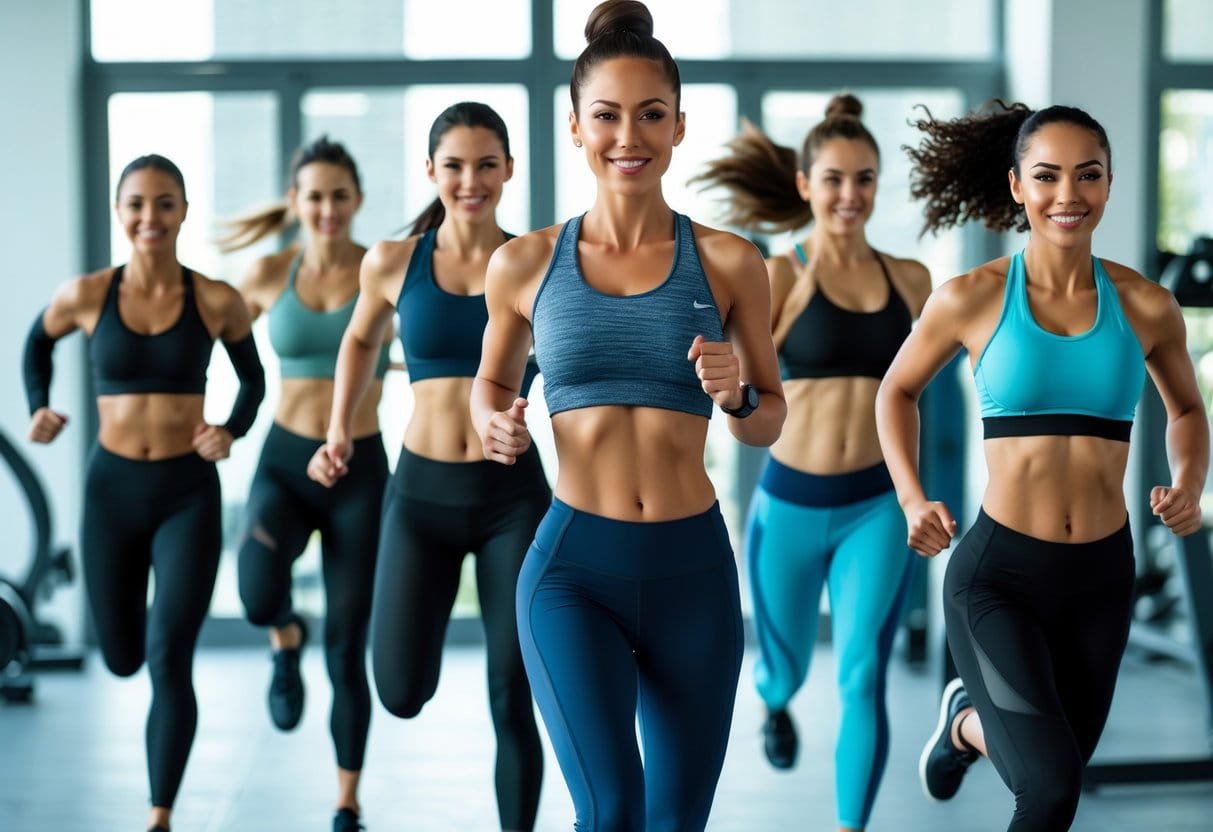
High impact sports bras are designed for intense activities like running, aerobics, and HIIT workouts. They provide strong support to reduce breast movement and help keep the wearer comfortable during vigorous exercise.
These bras often have wider straps and a firm band under the bust. Many include adjustable features to ensure a secure fit for different body shapes.
High impact bras can reduce bounce by up to 74% compared to wearing no bra. They work well for people with small or large breasts who need maximum support.
Most high impact sports bras use compression, encapsulation, or a combination of both. Compression presses the breasts against the chest, while encapsulation supports each breast separately.
Finding a good high impact sports bra depends on the right fit, materials, and personal comfort. Many brands now offer size-inclusive options to accommodate various cup sizes and body types.
5) Medium Impact Sports Bras

Medium impact sports bras offer a balance between support and comfort. They provide moderate compression without limiting movement, making them suitable for activities like cycling, hiking, and dance.
These bras usually have wider straps and a more structured fit. Some include light padding or even an underwire for extra support.
They work well for people who need more lift and control than low-impact bras provide but do not require the maximum support of high-impact styles. This makes them ideal for workouts with moderate movement.
Medium impact bras fit snugly to keep the bust stable during exercise. They can accommodate different bust sizes by combining compression and stretching materials.
Many brands design medium impact bras to suit various workout types and preferences. They offer enough support to manage sweat and motion without feeling too tight.
People who do activities with gentle bouncing but no heavy jumping often choose medium impact sports bras. These bras help protect breast tissue while allowing some flexibility in range of motion.
6) Low Impact Sports Bras
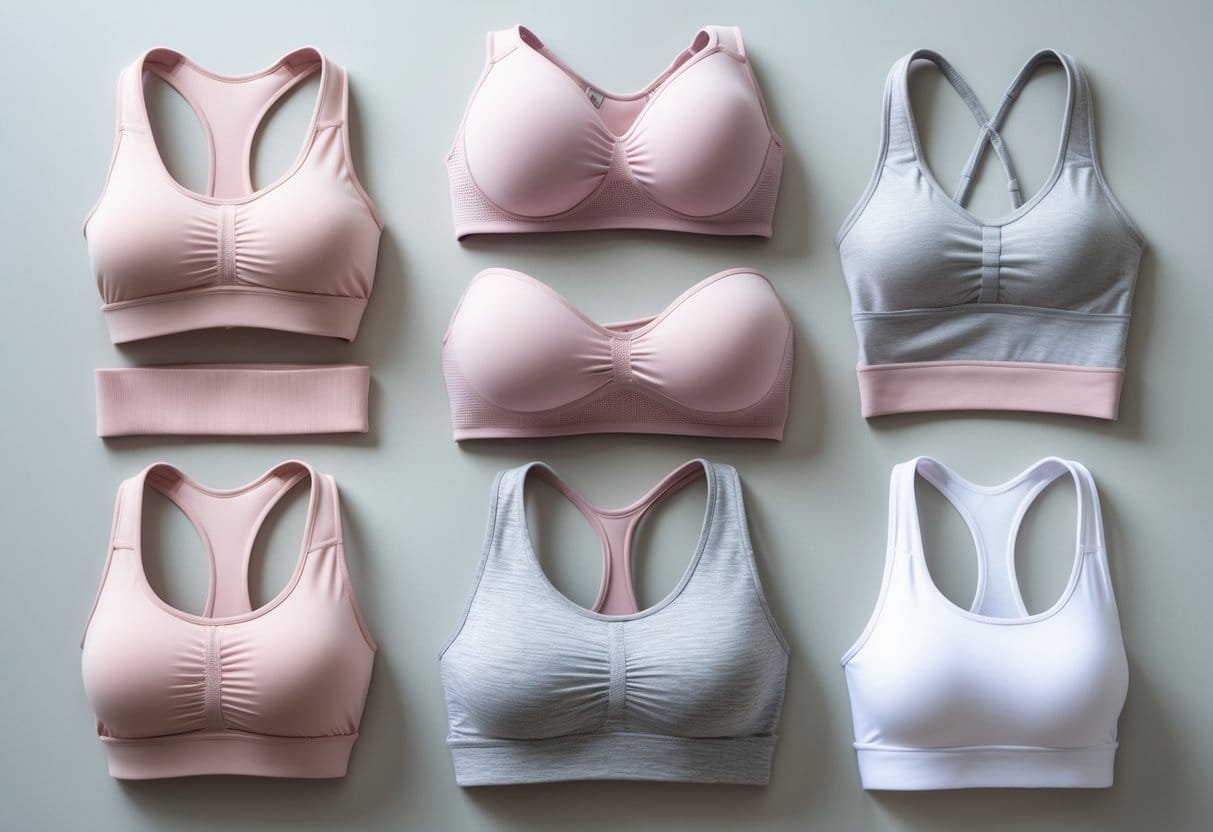
Low impact sports bras are designed for activities with minimal breast movement. They provide gentle support and comfort during exercises like yoga, walking, Pilates, or light weightlifting.
These bras often have a softer construction. They may not include underwire or heavy padding, which helps reduce pressure while still offering enough support for low-intensity workouts.
Low impact sports bras help prevent discomfort and fatigue. By keeping the breasts stable, they reduce pain and improve overall performance during light activities.
They are a good choice for those who need comfort but do not require strong support. Because of their design, many people find them comfortable enough to wear all day.
7) Mastectomy Sports Bras

Mastectomy sports bras are designed specifically for women who have had breast surgery. They provide gentle support and comfort while allowing for natural movement during physical activity.
These bras usually feature soft fabrics and pockets to hold breast forms securely. This helps maintain shape and balance, which is important for comfort and confidence.
Many mastectomy sports bras offer moderate to firm compression. This supports the body after surgery, reducing swelling and protecting sensitive skin.
These bras are suitable for activities like walking, yoga, and light workouts. They help women ease back into exercise without discomfort.
It is important to choose a bra that fits well and feels comfortable. Proper fit prevents irritation and ensures the bra provides the right amount of support during movement.
8) Adjustable Sports Bras

Adjustable sports bras have straps and bands that can be changed to fit the body better. This makes them easy to customize for comfort and support.
They are useful for different body shapes and sizes. People can tighten or loosen the straps and band as needed.
These bras work well for many kinds of activities. They provide enough support for light to intense workouts depending on how they are adjusted.
Many adjustable sports bras combine support with comfort. They help reduce strain during exercise by fitting securely without being too tight.
Because of the flexibility, adjustable sports bras are a popular choice for everyday wear and workouts. They allow wearers to change the fit as their needs change.
9) Racerback Sports Bras
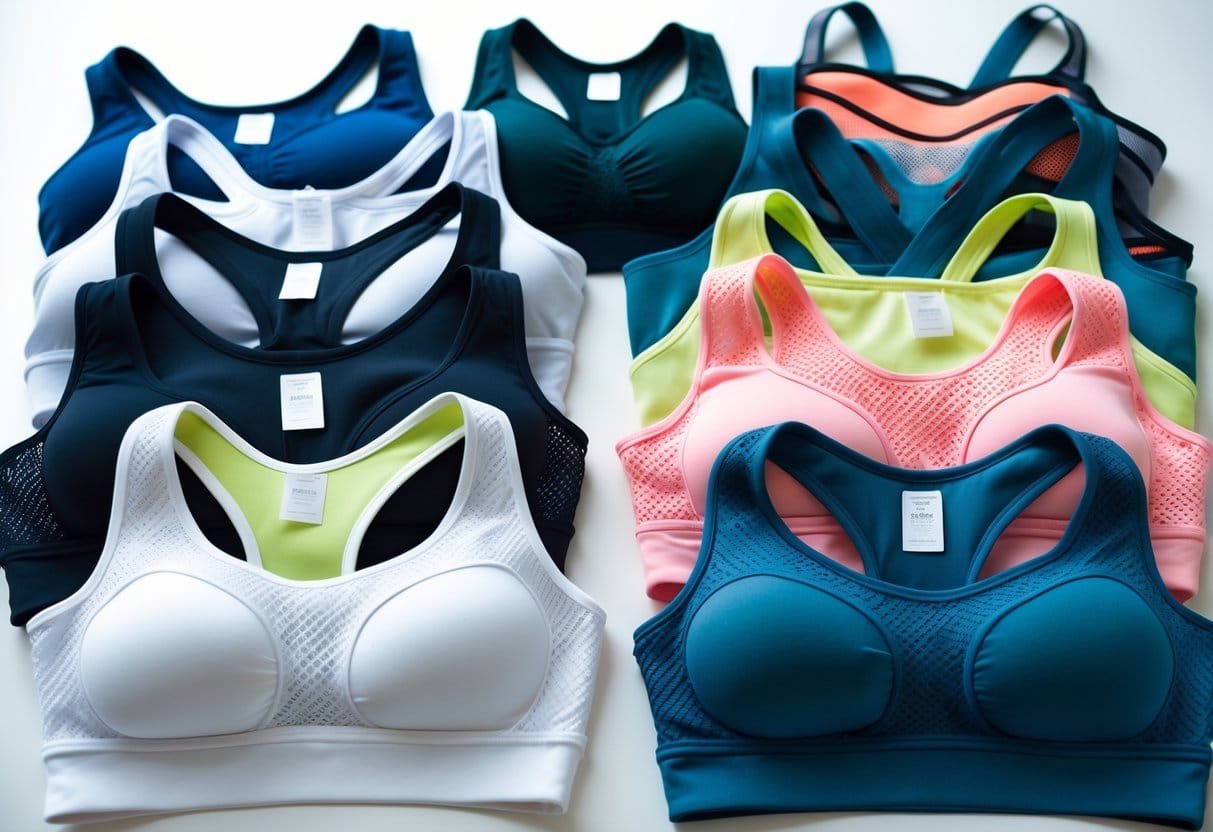
Racerback sports bras have straps that meet between the shoulder blades, forming a “Y” or “T” shape. This design allows for better arm movement, making them useful for activities like tennis, swimming, or weightlifting.
They offer firm support by distributing weight across the back and shoulders. This helps reduce strain during medium- to high-impact exercises.
Racerback bras also hide straps under sleeveless tops and dresses, providing a neat look. Many people choose them for both sports and everyday wear, especially those needing extra support.
The close fit of racerback sports bras often makes them comfortable for long wear. They balance style and function, making them a popular choice among athletes and regular users alike.
10) Front Closure Sports Bras
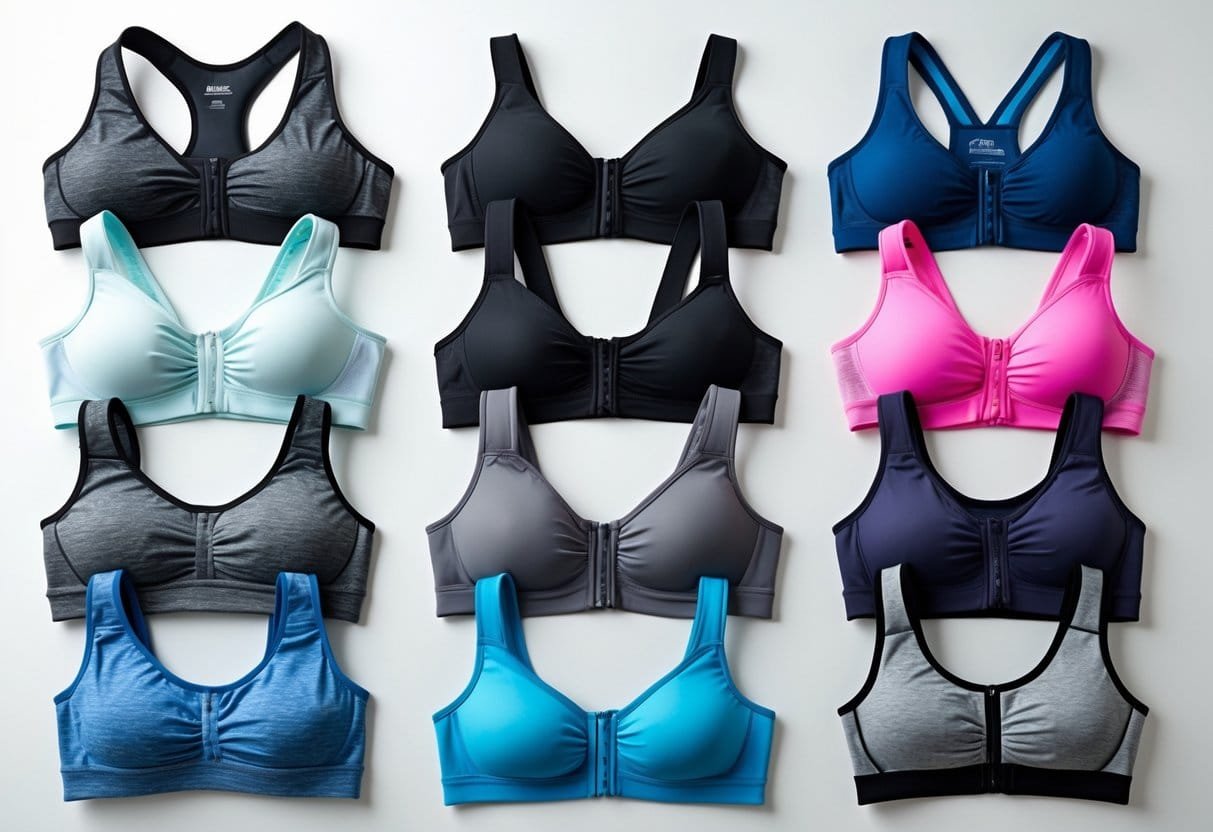
Front closure sports bras fasten with a clasp or zipper at the front. This design makes them easy to put on and take off compared to traditional bras that fasten at the back.
They are especially helpful for women who have trouble reaching behind their back or for those with limited mobility. The front closure also helps avoid discomfort caused by back clasps during exercise.
These bras provide good support and comfort for many activities. The zipper or hook system can vary, but they are generally durable and secure.
Front closure sports bras are popular for their convenience. They help reduce hassle after a sweaty workout by allowing quick removal without pulling the bra over the head.
Many styles offer a mix of support levels, from light to high impact. This makes them suitable for a range of workouts, including running, yoga, and gym sessions.
Key Features of Different Sports Bra Styles

Sports bras vary mainly by how much support they provide and the materials used to make them. The way a sports bra is built affects comfort, fit, and how well it controls movement during different exercises.
Support Levels Explained
Sports bras offer three main levels of support: low, medium, and high.
- Low support bras are best for activities like yoga or walking. They offer gentle compression and minimal structure, which fits smaller busts or low-impact workouts.
- Medium support bras are good for cycling, hiking, or dance. They usually combine compression and encapsulation for moderate control and fit a wider range of bust sizes.
- High support bras are designed for intense workouts like running or HIIT. They use firm materials and design features like wide straps, strong bands, and molded cups to minimize bounce and protect breast tissue.
Choosing the right support level helps reduce discomfort and prevents long-term stretching or damage.
Material and Construction Techniques
Materials in sports bras balance stretch, support, and moisture control. Common fabrics include nylon, spandex, and polyester blends. These materials wick sweat away and keep skin dry.
Construction methods vary by style. Compression bras use tight, stretchy fabrics that hold breasts firmly against the chest. Encapsulation bras have separate cups to support each breast individually, often with underwire or molded shapes.
Adjustable features like straps, bands, and back closures help fine-tune fit. Seamless designs reduce chafing, while mesh panels boost breathability. Reinforced stitching and thick elastic bands add to durability and support.
Good material choice and construction ensure a sports bra fits well, stays comfortable, and lasts through many workouts.
Choosing the Right Sports Bra for Your Activity

Choosing the right sports bra means picking one that matches the type of exercise and fits well. Different activities need different levels of support. A good fit prevents discomfort and keeps the wearer safe from injury.
Matching Support to Impact Level
Sports bras come with varying support levels: low, medium, and high. Low-impact bras work best for activities like yoga and walking. They offer gentle support and comfort without extra compression.
Medium-impact bras suit workouts such as cycling and hiking. They balance support and flexibility to reduce movement but allow freedom.
High-impact bras are made for running, HIIT, and intense sports. These provide firm hold with compression, encapsulation, or a combo. They limit breast movement to prevent pain and injury.
Choosing the right support depends on how much bounce the activity creates. More movement needs stronger support.
Importance of Proper Fit and Sizing
Fit is as important as support type. A sports bra must be snug but not tight. The band should fit firmly around the ribcage to provide support.
Cup sizes matter to avoid spillage or crushing. Encapsulation bras often use defined cups, helpful for larger bust sizes.
Straps should not dig in or slip off shoulders. Adjustable straps help customize fit and comfort.
Trying different sizes and styles is key since brands vary. A poorly fitting bra can cause chafing, discomfort, and reduce performance.
Checking fit by moving and jumping during a try-on helps ensure the bra stays in place and feels secure.
Frequently Asked Questions
Choosing the right sports bra means knowing how support, fit, and fabric work for different activities. Proper sizing, impact level, and unique design features all affect comfort and performance.
What are the differences between compression and encapsulation sports bras?
Compression sports bras press the breasts against the chest to limit movement. They work well for small to medium busts and low to medium impact activities.
Encapsulation bras have individual cups that support each breast separately. These are better for larger busts and higher-impact workouts because they reduce bounce more effectively.
How do I determine the correct size for a sports bra?
Measure both your band size under the bust and your cup size around the fullest part. Sports bras often fit differently than regular bras, so trying on various sizes is important.
Make sure the band feels snug but not too tight, and the cups cover the breasts without spillage or gaps. Adjust straps and closures for a secure fit.
Can a sports bra be used for daily wear or only for exercise?
Sports bras can be worn daily if they are comfortable and provide the needed support. Many choose sports bras for everyday use because they can reduce strain and feel soft under clothing.
However, some sports bras designed for high impact may feel too tight or restrictive for all-day wear.
What features should I look for in a sports bra for high-impact activities?
Look for wide, adjustable straps and a firm, supportive band. Encapsulation or combination bras are best to reduce breast movement during running, jumping, or HIIT workouts.
Moisture-wicking fabric and ventilation panels can improve comfort by keeping skin dry.
How often should I replace my sports bra to ensure proper support?
Replace sports bras every 6 to 12 months, depending on frequency of use and washing. The elastic fibers lose their strength over time, reducing support.
If the bra feels stretched out or less supportive, it’s time to get a new one.
Are there specific sports bras recommended for large-breasted women?
Yes, encapsulation and combination sports bras are generally recommended for larger bust sizes. They provide better separation and support.
Wide bands and adjustable straps are also important for comfort and control.



